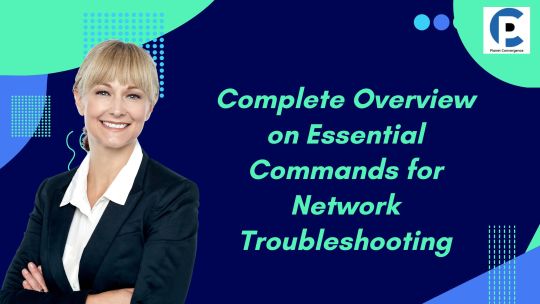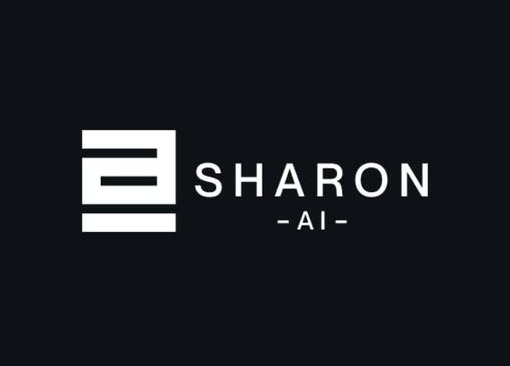#cloud infrastructure management
Explore tagged Tumblr posts
Text
Datametica elevates cloud infrastructure management by combining proven best practices with deep workload analysis to deliver smarter cloud infrastructure services. As organizations face surging cloud costs and growing complexity, Datametica’s workload optimization goes beyond mere rightsizing—its three-tiered strategy optimizes data models, application code, and system architecture to remove inefficiencies, reduce I/O, and cut resource usage. This targeted approach helps slash spend, boost performance, and align your cloud environment with real business needs—positioning Datametica as a trusted partner in maximizing ROI and operating agility.
0 notes
Text

Explore the fundamentals of cloud backup in this comprehensive beginner's guide. Learn how cloud backup works, its benefits, and why it's essential for safeguarding your data against loss, cyber threats, and system failures.
#cloud backup services#Cloud backup#Cloudbackup solution#cloud infrastructure management#cloud based server solutions
0 notes
Text
Cloud Managed Services for Performance, Security & Cost Efficiency | Applify
Cloud Managed Services help businesses offload the complexity of managing cloud infrastructure. From continuous monitoring and performance tuning to cost optimization and security management, Cloud Managed Services, our services ensure your cloud environments—across AWS, Azure, or GCP—run smoothly and efficiently. With proactive support, automation, and expert oversight, Cloud Managed Services free up your internal teams to focus on innovation, not infrastructure.
#Cloud Managed Services#Managed Cloud Solutions#Cloud Ops#Cloud Infrastructure Management#Scalable Cloud Solutions
0 notes
Text
How Cloud Computing Infrastructure is Changing Infrastructure Asset Management
How Cloud Computing Infrastructure is Changing Infrastructure Asset Management?
Cloud computing infrastructure has made it very easy to manage IT resources. The technology allows businesses to store, process, and manage data using virtual resources rather than physical hardware. This saves companies money, improves operations, and lets them focus on their core business. This article explains how cloud computing infrastructure is changing infrastructure asset management and how businesses can benefit from this.
Cloud Computing Infrastructure can be described as the virtual collection of servers, storage systems, and networks accessible via the Internet. Instead of building costly physical servers, such businesses can simply lease them by demand. That way, companies don't have to pay the overhead cost of upgrading or reducing the number of hardware systems needed.
What are the benefits of Cloud infrastructure management?
The management of cloud infrastructure involves supervising virtual resources for it to function effectively. Such would include monitoring their performance, ensuring security and scaling of resources based on demand. Its greatest benefit is that businesses are freed from the responsibility of maintaining the manual management of physical servers. Therefore, companies can put more time into core activities while not worrying much about the technicalities.
With cloud infrastructure, businesses can quickly adjust their resources. For instance, if a business needs more storage or computing power, it can increase its cloud services without delay. This flexibility helps businesses grow and adapt to changing needs.
How AI Improves Cloud Infrastructure?
AI plays a significant role in enhancing the cloud computing infrastructure. With AI, many tasks can be automated, and efficiency is improved, while potential problems are predicted before they occur. AI uses machine learning to analyze data and provide valuable insights. For instance, AI can predict demand, prevent downtime, and optimize resource use.
Key Benefits of AI in Cloud Computing?
Some of the benefits of using AI with cloud computing infrastructure are:
1. Cost Savings: AI helps businesses optimize cloud resources, so they only pay for what they need.
2. Improved Efficiency: AI automates processes, reducing human error and speeding up operations.
3. Better Decision Making: AI gives businesses real-time data to help make smarter choices.
4. Proactive Problem Solving: AI predicts potential issues, so businesses can fix them before they become problems.
How Sharon AI Improves Infrastructure Asset Management
Sharon AI is an example of how AI can improve cloud computing infrastructure. Sharon AI specializes in optimizing energy infrastructure and asset management. By integrating cloud computing with AI, Sharon AI helps energy companies understand their assets better, predict failures, and automate maintenance tasks. This leads to better resource management, reduced downtime, and more efficient use of energy.
Step-by-Step Guide to Integrating Cloud Infrastructure and AI
Here is a straightforward guide to help businesses implement cloud computing infrastructure and AI:
1. Assess Your Current Infrastructure: Look at your existing IT systems to see which parts can be moved to the cloud.
2. Select a Cloud Service Provider: Choose a provider that offers the features and flexibility your business needs.
3. Integrate AI: Add AI-powered solutions to your cloud services to improve resource management and automate tasks.
4. Monitor Performance: Regularly check the performance of your cloud system to ensure it meets your business’s needs.
5. Analyze Data: Use AI to analyze cloud data and gain insights that help with decision-making.
6. Plan for the Future: As your business grows, make sure your cloud and AI solutions can scale with it.
Conclusion
In conclusion, cloud computing infrastructure and AI are transforming how companies control their resources. Through their integration, companies can make efficiency improvements, save costs, and make smart decisions. Sharon AI is an excellent example of how AI optimizes infrastructure asset management, especially in the energy sector. Businesses can, with the right tools, get ahead of this fast-paced technological world and achieve long-term success.
#Compute Infrastructure#Cloud Infrastructure Solutions#Cloud Infrastructure Management#infrastructure asset management#cloud computing infrastructure#Sharon AI
0 notes
Text
Hire Cloud Developers: Web, Mobile & API Experts | Connect Infosoft
Hire Cloud Developers offers expert services in web, mobile, and API development, specializing in cloud technologies. Our team builds scalable, secure, and high-performance applications using AWS, Azure, and Google Cloud. Partner with us for innovative cloud solutions.

#Cloud Computing Development Services#Cloud Computing Development#Cloud Computing Service#Hire Cloud Computing Developer#Cloud application development#Cloud migration services#Cloud-native development#Cloud infrastructure management#Cloud DevOps services#Cloud security services#Cloud cost optimization
0 notes
Text
1 note
·
View note
Text

Know Essential Commands For Network Troubleshooting Ensuring the optimal operation of Technology Solutions and Services and preserving smooth connectivity depend heavily on network troubleshooting. We'll go over the key network troubleshooting commands in this article, which allow admins to quickly locate and fix problems. These instructions are essential for figuring out network setups, identifying connectivity issues, and maintaining a safe and dependable network architecture.
#Network Troubleshooting#Cloud network management#Technology Solutions and Services#IT Solutions and Services#customized network tech services#Cloud infrastructure management#Infrastructure as a service (IaaS)
0 notes
Text
#Cloud and DevOps#Cloud based DevOps#Cloud Native Development#Cloud SecurityCloud Consulting services#Cloud migration#Cloud infrastructure management#Application modernization services over cloud
0 notes
Text
Terragrunt vs Terraform: Battle of DevOps tools
Terragrunt vs Terraform: Battle of DevOps tools @vexpert #homelab #terraform #terragrunt #infrastructureascode #cloudinfrastructuremanagement #devops #terragruntconfiguration #dependencymanagement #remotestatemanagement
Infrastructure as Code (IaC) has become widely adopted by many, including in production environments, developers, and home lab enthusiasts to deploy infrastructure. Terraform is arguably one of the top tools used by DevOps professionals. However, there is another tool you may not have heard about called Terragrunt. What is Terragrunt? What about Terragrunt vs Terraform? Are they competing…

View On WordPress
#Cloud Infrastructure Management#dependency management#infrastructure as code#managing multiple environments#remote state management#reusable terraform components#terraform#terraform modules#terragrunt#terragrunt configuration
0 notes
Text
just like with machine learning, we can and should demystify “the cloud” without demonizing it in the process. cloud computing and cloud storage architecture are extremely useful tools; it’s how they get deployed by big tech companies that can be a problem.
#ray.txt#i’m making this one unrebloggable because i do not have the bandwidth (lol) for managing this conversation with strangers#tl:dr i’m not a programmer and i’m not in enterprise architecture anymore#but like… we need cloud computing and cloud storage now#we would have to re-engineer and re-design a lot of our infrastructure to achieve that#idk i am just leery of seeing cloud storage and cloud computing getting lumped in with generative AI in the cultural discourse#okay i’m going back to bed now
30 notes
·
View notes
Text
Cloud Managed Service Provider in Singapore:- Optimized & Cost-Efficient Cloud Managed Services | Applify!
Cloud Managed Service Provider in Singapore:- Optimize Cloud Performance, Security, and Costs With Our Cloud Managed Services. We Handle Multi-Cloud Operations, Automation, Compliance, and Proactive Monitoring So You Can Focus On Innovation. Get Expert Cloud Management Today!
#Cloud Managed Services#Cloud Infrastructure Management#Cloud Application Management#Cloud Security Management
0 notes
Text
Cloud infrastructure management helps businesses achieve scalability, robust security, and operational excellence. Learn more!
0 notes
Text
Revolutionizing Infrastructure Management with Cloud Computing and AI

How organizations manage their IT resources, has changed with cloud computing infrastructure. By using it with the capabilities of artificial intelligence (AI), businesses can automate tasks, improve decision-making, and optimize operations. This blog will discuss how cloud computing is changing the face of infrastructure asset management.
Cloud Computing Infrastructure is the aggregate of virtual resources companies store, process, and manage data. It encompasses servers, storage, and networking and can be accessed over the internet instead of having physical hardware. Thus, the approach provides business enterprises with computing resources without maintaining expensive physical servers.
How Does Cloud Infrastructure Management Benefit Business Organizations?
The management process of cloud infrastructure includes overseeing those virtual resources to ensure they run efficiently. Managing cloud infrastructure includes observing performance, scaling up resources based on demand, and security. Since cloud-based systems can remove the hassle of having to manually manage physical servers, they allow businesses to focus solely on their core operations.
With cloud infrastructure solutions companies can scale their operations easily. Whether a company needs more storage space or computing power, cloud services make it simple to adjust based on usage.
The Role of AI in Cloud Computing
The integration of artificial intelligence in cloud computing has greatly improved the way cloud systems work. AI-powered cloud solutions help businesses optimize performance by automating routine tasks, predicting potential issues, and improving resource allocation.
AI uses machine learning to analyze vast amounts of data and provide real-time insights. It can forecast demand, prevent potential downtime, and ensure resources are used most efficiently.
Benefits of AI in Cloud Computing
Some of the key benefits of AI-powered cloud solutions are as follows:
1. Cost Savings: AI optimizes the use of cloud resources, thereby allowing businesses to pay for only what they need.
2. Improved Efficiency: The use of AI in business means faster processes and reduced human error.
3. Better Decision Making: AI offers data-driven insights that help businesses make better decisions.
4. Proactive Problem Solving: AI can predict issues before they become problems, thus minimizing downtime.
How Sharon AI Improves Cloud Computing
We are one of the excellent ways AI can improve cloud computing. We were created to optimize large-scale energy infrastructure and asset management. With expert knowledge in USA energy markets and infrastructure, Sharon AI improves energy system management by applying AI as well as cloud computing.
With the integration of Sharon AI with cloud infrastructure, energy companies can better understand their assets, predict failures, and automate maintenance tasks. This leads to better resource management, reduced downtime, and more sustainable energy use.
Step-by-Step Guide to Integrating AI and Cloud Solutions
Here's a simple guide to implementing cloud infrastructure solutions and AI in your business:
1. Assess Your Current Infrastructure: Take stock of your existing IT systems to determine which parts can be moved to the cloud.
2. Select a Cloud Service Provider: Choose a provider that offers the features and scalability your business needs.
3. Integrate AI: Implement AI-powered cloud solutions to optimize resource allocation and automate processes.
4. Monitor Performance: Regularly monitor cloud performance to ensure it meets your business’s needs.
5. Analyze Data: Use AI to draw insights from cloud data, and thus make informed decisions.
6. Plan for the Future: As your business grows, ensure that your cloud solutions and AI scale with it.
In a nutshell, cloud computing infrastructure and AI are changing the way business enterprises manage their resources. With the integration of these technologies, companies can increase efficiency, reduce costs, and optimize operations. Sharon AI is an excellent example of how AI can improve infrastructure asset management, particularly in energy sectors. With AI-powered cloud solutions, any business can remain ahead in this fast-changing technological world.
With the right tools and strategies, businesses can effectively manage their infrastructure and make smarter, data-driven decisions. Be it energy, finance, or any other industry, the key to long-term success lies in the combination of cloud infrastructure management with AI.
#cloud computing infrastructure#infrastructure asset management#Cloud Computing Infrastructure#Cloud Infrastructure Solutions#Cloud Infrastructure Management#Artificial Intelligence in Cloud Computing#AI-Powered Cloud Solutions#AI Cloud Computing Benefits#sharonai
0 notes
Text

Cloud And Infrastructure Services.
To handle infrastructure, network, security, apps, development, and testing services that satisfy your needs, select Astute cloud managed services.
#Cloud Infrastructure Services#Cloud Managed Services#Cloud And Managed Services#Cloud Based Managed Services
1 note
·
View note
Text
Cloud Infrastructure Security Threats and Challenges in 2025

Cloud infrastructure security remains a top-tier concern for organizations in 2025, a year marked by escalating reliance on cloud services. While these environments offer unmatched flexibility and scale, they also introduce a unique array of security threats and persistent challenges that demand constant vigilance and adaptive strategies. As the digital landscape evolves, safeguarding the foundational cloud infrastructure becomes even more paramount.
Evolving Threat Landscape in 2025
One of the most pressing threats in 2025 is the heightened sophistication of cyberattacks. Threat actors are now expertly wielding advanced techniques, including AI-powered tools, to circumvent traditional security measures. We're seeing more Advanced Persistent Threats (APTs) specifically targeting cloud infrastructure, aiming for prolonged infiltration and covert data exfiltration. These attacks are increasingly subtle, designed to evade detection and exploit intricate vulnerabilities. Furthermore, supply chain attacks pose a growing danger, where attackers compromise third-party vendors or essential software components integrated into cloud environments, leading to widespread security breaches.
Identity-based attacks, such as account takeovers and credential theft, continue to be a primary pathway for compromising cloud infrastructure. Even with advancements in multi-factor authentication (MFA) and robust Identity and Access Management (IAM) systems, weaknesses in their implementation or human error can still expose systems. The sheer volume of sensitive data stored in the cloud also means data breaches are an ongoing risk, with attackers constantly searching for misconfigured storage buckets or exploiting flaws to gain unauthorized access to confidential information.
Persistent Cloud Security Challenges
Beyond these evolving threats, several fundamental challenges continue to complicate cloud infrastructure security in 2025. Chief among them are misconfigurations. The inherent complexity of cloud platforms, with their vast array of services and intricate settings, often leads to human error. Even minor misconfigurations—like an open network port or overly permissive access rights—can create critical entry points for attackers. This challenge is amplified in multi-cloud or hybrid cloud setups, where maintaining consistent security policies across diverse providers becomes an intricate task.
The shared responsibility model, while a cornerstone of cloud security, remains a common source of confusion. Organizations sometimes misunderstand their precise security obligations, mistakenly assuming that the cloud provider handles all security aspects. This gap in understanding can leave vital components, such as application-level security, operating system patching, and data encryption policies, unaddressed by the customer, creating significant vulnerabilities.
Limited visibility and control across dynamic cloud environments also present a significant hurdle. As businesses rapidly deploy new services and resources, maintaining a clear and comprehensive overview of their entire cloud footprint becomes challenging. This can lead to "shadow IT"—unauthorized or unmanaged cloud resources—which operate outside established security governance and introduce unmonitored risks.
Moreover, the persistent cybersecurity skill gap significantly impacts cloud infrastructure security. There's a global shortage of professionals with the specialized expertise required to design, implement, and manage secure cloud architectures. This talent scarcity often forces organizations to rely on more generic security practices that may not adequately address the unique nuances of cloud environments. Lastly, navigating the complex web of compliance and governance requirements across various industries and geographical regions represents an ongoing challenge, demanding continuous auditing and adaptation of security controls.
Connect with Expert Team: https://teleglobals.com/contact-us
Conclusion In 2025, securing cloud infrastructure demands a proactive and comprehensive strategy. Organizations must prioritize robust identity and access management, pervasive data encryption, continuous monitoring for misconfigurations, and a clear understanding of the shared responsibility model. Addressing the inherent complexities, bridging the skill gap, and anticipating the ever-evolving threat landscape will be crucial for maintaining a resilient and secure cloud presence.
#Cloud Security#Cloud Computing#Cloud Consulting#Cloud Infrastructure#Cloud Risk Management#Zero trust Management#cloud service providers
0 notes